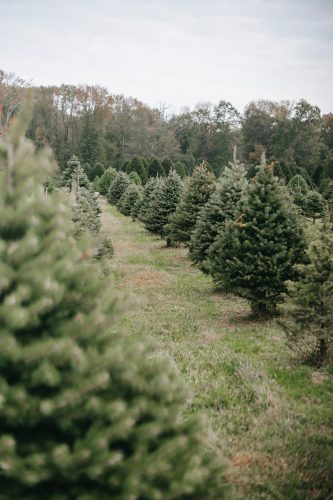New Yorkers are in danger of not finding artificial Christmas trees or decorations due to a global supply chain disruption. This is an opportunity to rethink our holiday purchases and opt for a greener solution with a lower carbon footprint.

New York, NY, United States - October 19, 2021 /MarketersMEDIA/ —
For the first time ever, New Yorkers are in danger of not finding a Christmas tree or adequate Christmas decorations this year thanks to a disrupted global supply chain, extreme weather conditions, and shortages of workers. The low supply and high demand, combined with increased shipping prices, are costs that are being passed to the customer at a markup of 20 to 25% (Wall Street Journal).
According to AA Christmas Tree, a family-owned company that has been delivering Christmas trees to residents in NYC for over 15 years, this isn’t bad news.
At Christmas, we tend to waste and consume more than we do the rest of the year. A shortage of artificial trees is an opportunity for us all to pause for a moment and consider the impact they have on our environment.
Creation: Tree Plant vs. Tree Farm
While it is fascinating to see the amount of effort and skill that goes into creating an artificial tree (Business Insider), it is also important to notice the amount of electricity and PVC used in each tree’s creation. Manufacturing plants have created a process that in one day can form a beautiful recreation of what takes nature five to eight years.
During those five to eight years, however, the live Christmas tree provides what PVC cannot: living space for animals, scrubs the air of CO2, releases oxygen, and replenishes itself with seeds.
According to Carbon Trust, ¼ of an artificial tree’s carbon footprint occurs during its creation. Therefore, to counteract its negative impact during manufacturing, the artificial tree needs to be used for ten or more years.
Transportation: Overseas vs. Local
Artificial trees are shipped from overseas; approximately 80% of them come from China. This is why we are feeling such a significant impact from a disrupted global supply chain this year. In addition to increased shipping costs, the fuel used to transport these trees increases their carbon footprint.
Natural trees are sourced from nearby nurseries, decreasing the fuel and energy needed to bring them to your living room.
Disposal: Biodegradable vs. Landfills
When a live Christmas tree is thrown out and placed in a landfill, its carbon footprint increases significantly.
According to Carbon Trust, “How you dispose of your real Christmas tree is much more significant than where it comes from and how much fuel was used to get it to your home. For a 2 metre tall real Christmas tree, with no roots, the carbon footprint is 16kg CO2e if it ends up in landfill. This is because the tree decomposes and produces methane gas, which is 25 times more potent as a greenhouse gas than carbon dioxide.”
The good news is that real trees are biodegradable and have many options for recycling. These include: burning, turning into mulch, chipping, composting, crafting, creating wildlife and fish habitats, and more.
With so many options, there is no reason to dispose of a live tree in a landfill.
The majority of artificial trees are made of PVC plastic. When the tree is disposed of it sits in a landfill where it will never fully decompose. There are no options to dispose or recycle an artificial tree naturally.
AA Christmas Trees isn’t sending the message to dump the artificial tree you have and run out to purchase a live tree this year. If you have an artificial tree, make sure you use it for as long as possible before disposing of it.
The American Christmas Tree Association (ACTA) commissioned a comparative Life Cycle Assessment study in 2017 to compare the impact of artificial Christmas trees and real Christmas trees. It was found that the length of use was the only way to combat the impact of an artificial tree. The longer you use the tree, the lower the carbon footprint. However, for the real Christmas tree, how you dispose of it after Christmas makes the biggest impact. Read the full report at https://www.christmastreeassociation.org/wp-content/uploads/2018/11/ACTA_2018_LCA_Study.pdf.
When it comes time to replace the fake plastic tree, do yourself and the environment a favor, and purchase a locally sourced live Christmas tree.
If you need a Christmas tree this year, remember to purchase a live tree and purchase it early. The Great Recession of 2008 is still impacting the supply of live trees and is projected to do so through 2025 (New York Times).
AA Christmas Tree is taking pre-orders now and delivering as early as November 15, 2021.
To learn more about AA Christmas Trees, visit https://nycchristmastrees.com/
Contact Info:
Name: Arthur
Email: Send Email
Organization: AA Christmas Trees
Website: https://nycchristmastrees.com/
Source URL: https://marketersmedia.com/real-christmas-trees-are-the-eco-friendly-choice/89049678
Source: MarketersMEDIA
Release ID: 89049678